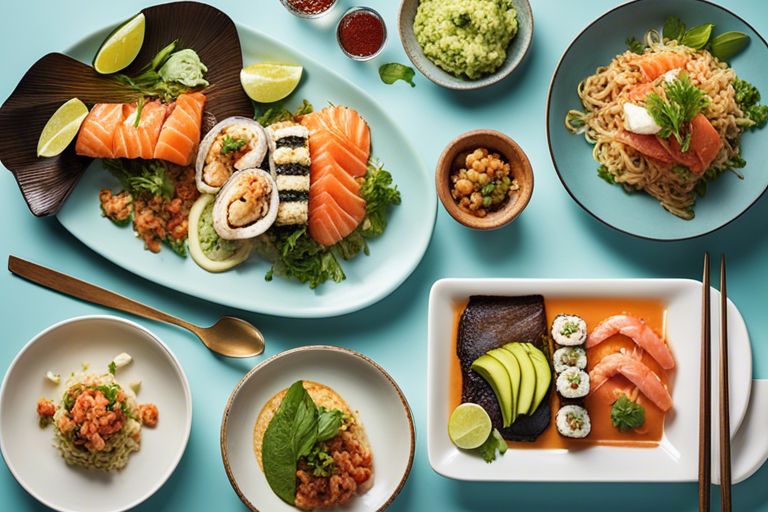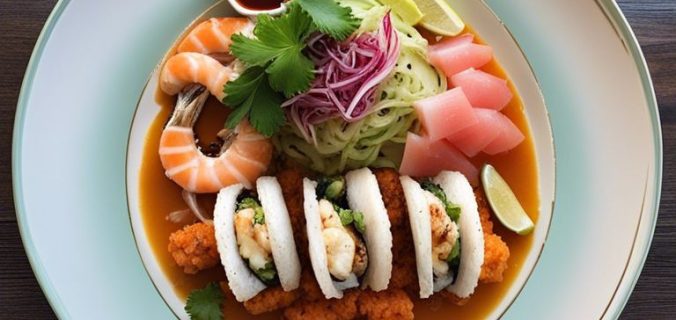Many plant-based enthusiasts are familiar with tofu and tempeh as meat alternatives, but textured vegetable protein (TVP) should not be overlooked when it comes to creating delicious plant-based seafood dishes. TVP, derived from soy flour, is high in protein, low in fat, and offers a versatile base for various recipes. In this blog post, we will explore the endless possibilities of using TVP in creating flavorful and sustainable seafood alternatives that are not only delicious but also environmentally friendly.
Key Takeaways:
- Texturized Vegetable Protein (TVP) is a versatile plant-based ingredient that can be used to create seafood alternatives in recipes.
- TVP can be flavored and shaped to mimic the texture and taste of various seafood dishes, making it an excellent option for those looking to incorporate more plant-based meals into their diet.
- By combining TVP with spices, herbs, and other ingredients, it is possible to create delicious and nutritious plant-based seafood recipes that are both satisfying and environmentally friendly.
The Science of TVP
Composition and Nutritional Value
If you’re looking to incorporate TVP (Textured Vegetable Protein) into your plant-based seafood recipes, it’s crucial to understand its composition and nutritional value. TVP is made from defatted soy flour, a byproduct of soybean oil production. It is a concentrated source of protein, providing all the crucial amino acids needed for human health. Additionally, TVP is low in fat and cholesterol-free, making it a heart-healthy alternative to meat-based proteins.
Advantages of TVP in Meat Substitutes
Another significant advantage of TVP in meat substitutes is its versatility in mimicking the texture and mouthfeel of real seafood. TVP can absorb flavors well, making it an excellent base for creating plant-based seafood dishes that are both delicious and nutritious. Furthermore, TVP is a cost-effective and sustainable protein source, making it a popular choice for individuals looking to reduce their meat consumption.
Crafting the Perfect Plant-Based Seafood with TVP
Some Cooking with Texturized Vegetable Protein (TVP) can elevate your plant-based seafood dishes to a whole new level. TVP is a versatile ingredient that can mimic the texture and flavor of seafood, making it an excellent choice for those looking to recreate traditional seafood dishes in a plant-based form.
Selecting the Right Type of TVP
Type
When choosing TVP for your plant-based seafood recipes, consider the size and texture of the TVP granules. Fine granules work well for dishes like crab cakes or shrimp scampi, while larger pieces may be more suitable for dishes that require a meatier texture, such as fish fillets or scallops.
Texture and Flavor Enhancement Techniques
Type
When working with TVP in plant-based seafood recipes, it’s crucial to employ techniques that enhance both the texture and flavor of the final dish. Rehydrating TVP in vegetable broth or seaweed-infused water can infuse it with savory umami notes, while marinating it in a blend of seaweed, soy sauce, and lemon juice can help to enhance the seafood-like flavor. Experiment with different techniques to find the perfect balance of texture and flavor in your plant-based seafood creations.

Recipe Development and Culinary Applications
Innovative Plant-Based Seafood Recipes Using TVP
One of the key benefits of Textured Vegetable Protein (TVP) is its versatility in plant-based seafood recipes. Its ability to mimic the texture of seafood makes it a fantastic ingredient for creating innovative dishes. From vegan crab cakes to fishless tacos, the possibilities are endless when it comes to incorporating TVP into your seafood-inspired recipes.
Tips for Cooking and Serving
One important tip for cooking with TVP is to rehydrate it properly before using it in your recipes. This can be done by soaking it in a mixture of water or vegetable broth until it becomes soft and pliable. Another tip is to season the TVP generously to enhance its flavor profile and make it taste more like the seafood it is emulating. Knowing how to properly prepare and flavor TVP will ensure that your plant-based seafood dishes are delicious and satisfying.
- Rehydrate TVP before using it in recipes.
- Generously season TVP to enhance its flavor.
- Knowing how to properly prepare and flavor TVP will elevate your plant-based seafood dishes.
Recipe Development and Culinary Applications
Understanding the potential of TVP in plant-based seafood recipes is crucial for creating delicious dishes that appeal to both vegans and omnivores alike. By utilizing TVP as a versatile ingredient, you can expand your culinary horizons and experiment with a wide range of flavors and textures. However, it’s imperative to handle TVP with care, as improper preparation can lead to unsatisfactory results. Make sure to rehydrate and season TVP properly to unleash its full potential in your plant-based seafood creations. Experimenting with different cooking methods and flavor combinations will help you perfect your recipes and wow your guests with tasty and nutritious plant-based dishes.
Sustainability and Consumer Impact
Environmental Benefits of Plant-Based Seafood
Not only does incorporating TVP in plant-based seafood recipes offer a delicious alternative for consumers, but it also brings significant environmental benefits. An advanced ingredient like TVP requires fewer resources, emits fewer greenhouse gases, and helps reduce the demand for overfished species, thus easing pressure on ocean ecosystems.
Consumer Acceptance and Market Trends
Seafood consumption is on the rise globally, driven by health-conscious consumers seeking sustainable and ethical options. Incorporating plant-based seafood alternatives like those made with TVP can appeal to a broader audience, including flexitarians, vegetarians, and those looking to reduce their seafood consumption for environmental reasons.
Plus, the growth in plant-based seafood options reflects a changing consumer landscape that is demanding more sustainable and ethical food choices. Companies that embrace this trend are likely to benefit from a competitive edge in the market, while also contributing positively to the environment and animal welfare.
Summing up
Considering all points, it is clear that incorporating textured vegetable protein (TVP) in plant-based seafood recipes can greatly enhance both the nutritional value and texture of the dishes. TVP provides a versatile and cost-effective alternative to seafood, allowing for the creation of delicious and sustainable plant-based meals. With proper seasoning and cooking techniques, TVP can mimic the taste and mouthfeel of various seafood options, making it a valuable ingredient for those looking to reduce their consumption of animal products. Overall, exploring the potential of TVP in plant-based seafood recipes opens up a world of culinary possibilities that are not only delicious but also environmentally friendly.
FAQ
Q: What is TVP?
A: TVP stands for Textured Vegetable Protein, which is a versatile plant-based protein made from soybeans. It is a popular meat substitute in vegetarian and vegan diets due to its high protein content and texture similar to meat.
Q: How can TVP be used in plant-based seafood recipes?
A: TVP can be used in various plant-based seafood recipes to mimic the texture and flavor of seafood. It can be rehydrated and seasoned to resemble shrimp, crab, or fish in dishes such as vegan ceviche, crab cakes, or fish tacos.
Q: What are the benefits of using TVP in plant-based seafood recipes?
A: Using TVP in plant-based seafood recipes not only provides a cruelty-free alternative to traditional seafood but also offers a sustainable option that is environmentally friendly. TVP is also a cost-effective source of protein and can be easily customized to suit different flavor profiles.

